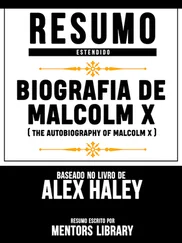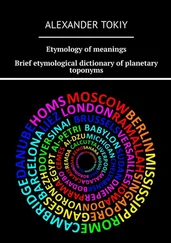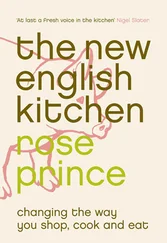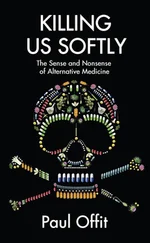Here’s one, to get an undeserv’d repute
Of deepe deepe learning, all in fustian sute
Of ill-plac’d farre-fetch’d words attiereth
His period, that all sence forsweareth
but also described his own satires as ‘my fustian’. 38
So by the turn of the century several stylistic ingredients had come together. Marlovian bombast had become intermixed not only with a deliberately coarse vernacular, but also with the fustian of Marston’s inkhorn terms; and the fashion had already begun of submitting the resultant mixture to ludicrous parodizing routines. The comic potentialities of such a style were peculiarly rich and various. A consistently high style can be guyed, of course, using effects of bathos and incongruity; but the incongruity is then likely to be systematic, depending on a sustained contrast between high level and low (as in the two forms of burlesque, mock-heroic and travesty). The starting-point for English seventeenth-century nonsense, on the other hand, was a style with built-in incongruities of several kinds, constantly working their effects at the local level. In exploiting these parodically, nonsense poetry could shake out a kaleidoscopic mixture of comic effects. Hence both its strength and its weakness. Its strength was its exuberant multifariousness, which included its ability to make use of shreds of other genres at the same time (sententious or proverbial lines, ballad-material, etc.). And its weakness was its inherent tendency to fragmentation, its inability to develop large-scale poetic designs.
Finally, one other literary influence on Taylor’s nonsense poetry must also be mentioned, though its effect is hard to measure in any precise way: the prose of Thomas Nashe. It is clear that Taylor idolized Nashe, and tried to model his own comic-rhapsodic-satirical prose on Nashe’s style. One of Taylor’s works even took the form of an account of a visit by Nashe from beyond the grave:
there appeared unto me a poore old swarty fellow, with stareing haire, Neglected beard, Ashy Gastly look, with a black Cloath Cloak upon his back, which hee had worne as thin as if it had been Searge (whereby I conceiv’d him to be a Poet) … Quoth he, my name is Thomas or Tom Nashe, who when this Ayerie shadow of mine had a corporeall substance, I had a yerking, firking, jerking, Satiricall and Poeticall veine … 39
Nashe had contributed to the ridicule of fustian, both in his polemic against Gabriel Harvey and in the bizarrely grandiloquent speech of one of the characters in his The Unfortunate Traveller , ‘a bursten belly inkhorne orator called Vanderhulke ’. 40In several of his writings, Nashe had pursued a method of fantastical metaphor-development which expanded the frontiers of the comic grotesque. And in his final (1599) and most extraordinary work, Lenten Stuffe (a kind of prose rhapsody in praise of Great Yarmouth and its smoked herrings), he had developed the mock-encomium to the point where it too, like Taylor’s nonsense poetry, contained a kaleidoscopic mixture of high and low styles, shaken together with almost manic linguistic energy:
A colony of criticall Zenos , should they sinnow their sillogisticall cluster-fistes in one bundle to confute and disprove moving, were they, but during the time they might lap up a messe of buttred fish, in Yarmouth one fishing, such a motion of toyling Mirmidons they should be spectators of and a confused stirring to and fro of a Lepantalike hoast of unfatigable flud-bickerers and foame-curbers, that they woulde not move or stir one foote till they had disclaimd and abjurd their bedred spittle-positions. 41
Even in his most energetic prose, Taylor never came close to this; but one may still sense the ghost of Tom Nashe hovering over many of Taylor’s works, including his nonsense poetry.
The purpose of this chapter has been to place the nonsense style of Taylor and his imitators in a particular literary context: a collocation of stylistic forces which came together in the last decade of the sixteenth century and the first decade of the seventeenth. Those were the two decades that contributed most to Taylor’s formation as a poet. He was evidently a voracious reader and theatre-goer with a very retentive memory; no doubt he absorbed a great deal of Shakespeare as well as Marlowe, Marston, Dekker, Middleton and Jonson. Some of his best lines, indeed, are pure nonsense-Shakespeare, such as ‘From out the heels of squemish magnitude’ or ‘Then smoth thy brow with milk-white discontent’. Although written by a Thames waterman rather than a sophisticated court wit, Taylor’s nonsense poetry was nevertheless a highly literary phenomenon, closely tied to the literary culture which it parodied and celebrated.
And this in turn helps to explain why the genre died away in the second half of the seventeenth century. After Taylor’s death in 1653, nonsense poetry was kept going by the comic anthologies or ‘drolleries’ which started up in Cromwellian England and became a major publishing industry after the Restoration. 42If one looked only at the printing-history of the genre, one might even think that the writing of nonsense poetry underwent a revival during this period. But this impression is misleading; the truth is that the compilers of the Restoration drolleries were scouring all available manuscripts – and memories – for comic material to meet a seemingly insatiable public demand. (Similarly, it was during this period that printers made use of the manuscripts of the Middle Temple and Gray’s Inn revels, which they published in 1660 and 1688 respectively.) In the process, the drollery-editors picked up quite a few nonsense verses; they seem also to have concocted one or two further poems in the same manner. But in terms of internal literary history, we can see that a genre which was so closely linked to poetic styles of the turn of the century could not properly flourish once those styles themselves had become antiquated and remote. For a while it was insulated by its own oddity; it may be true that by the 1670s it had, like its stylistic sources, become strange-sounding stuff, but of course it was in the very nature of nonsense poetry to sound strange. The point is not that it became unreadable, but that the impetus to write it had gone.
However, another part of the internal literary-historical explanation for the decline of nonsense poetry adds a further paradoxical twist. Far from distancing itself from nonsense poetry, ordinary poetry had, so to speak, encroached on the domain of nonsense itself. One of the stylistic mechanisms of nonsense poetry, namely the exploitation of remote and incongruous metaphors, had itself been absorbed into the mainstream of English poetry. Under the influence of continental theories of the special nature of creative ‘wit’, which emphasized the role of novelty and surprise, 43the later metaphysical poets had developed techniques of metaphor-making which verged on self-parody – giving the nonsense poet little left to do. When John Cleveland can describe a girl’s hand as ‘So soft, ’tis ayr but once remov’d, / Tender, as ‘twere a Jellie glov’d’, or conjure up kisses with the lines, ‘Love prints his Signets in her smacks, / Those Ruddy drops of squeezing wax’, 44it is not clear that the comic effects of such ingeniousness could be far overtaken by any attempt at incongruity for incongruity’s sake. Nor is it altogether absurd that one modern anthology of nonsense poetry should include some extracts from Marvell’s Upon Appleton House. 45In her Poems and Fancies (1653), Margaret Cavendish, Marchioness of Newcastle, provided a kind of reductio ad absurdum of this new poetic, stringing together her conceits or ‘fancies’ with ostentatious disregard for the demands of congruity:
Читать дальше












